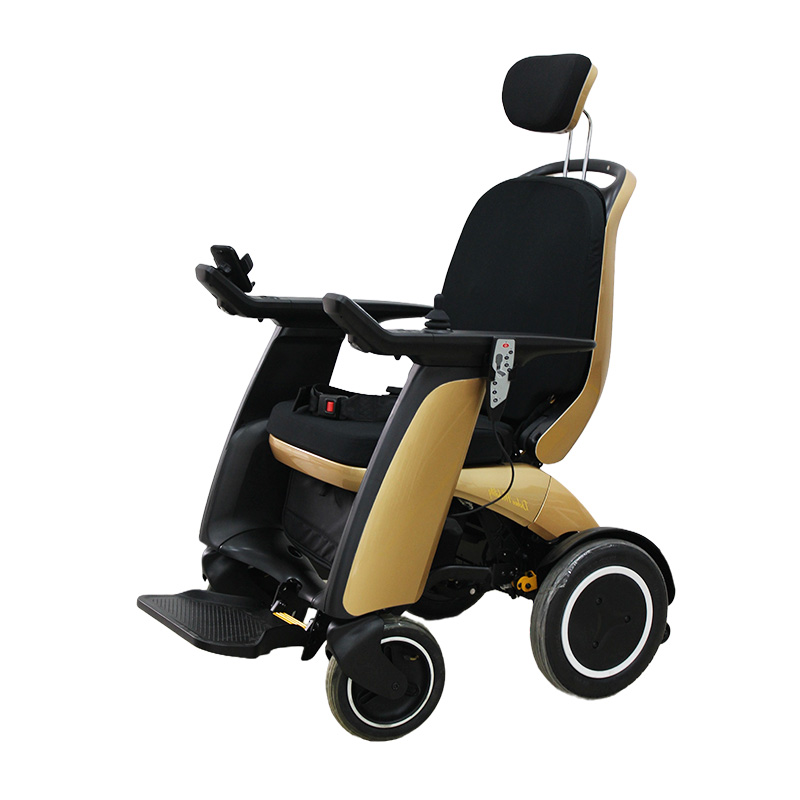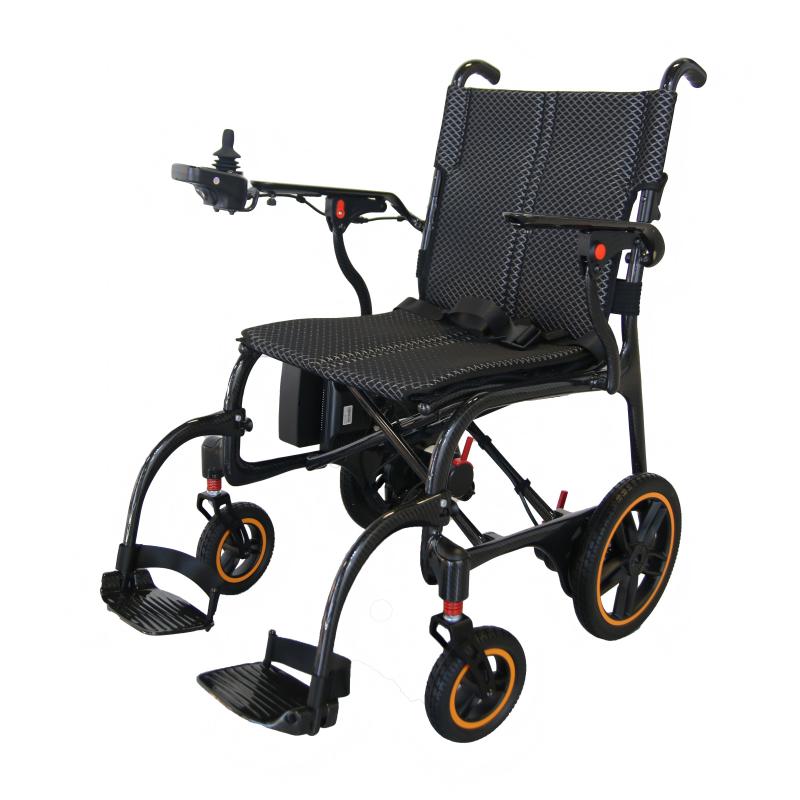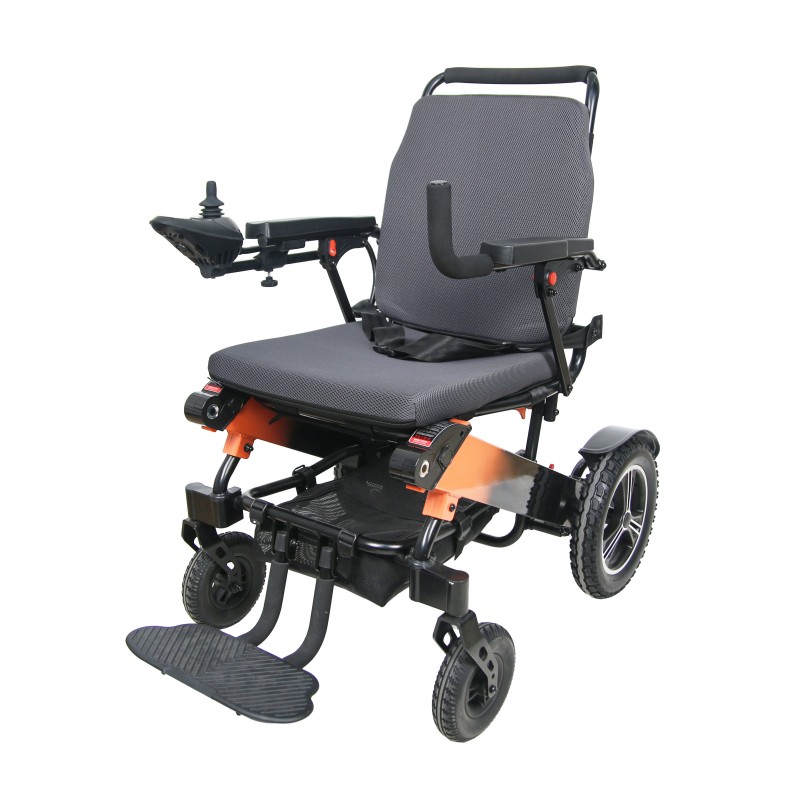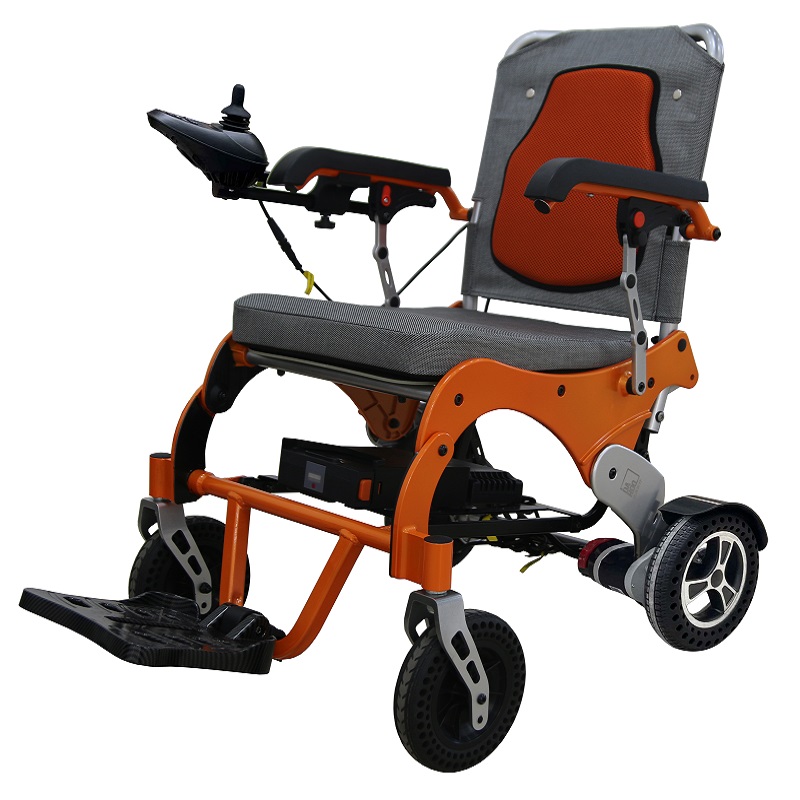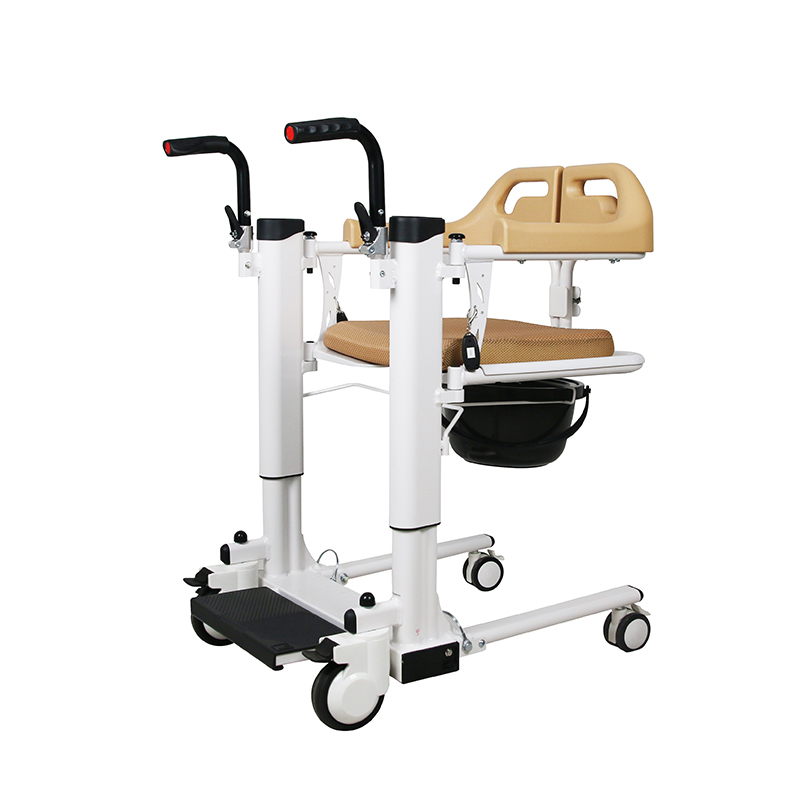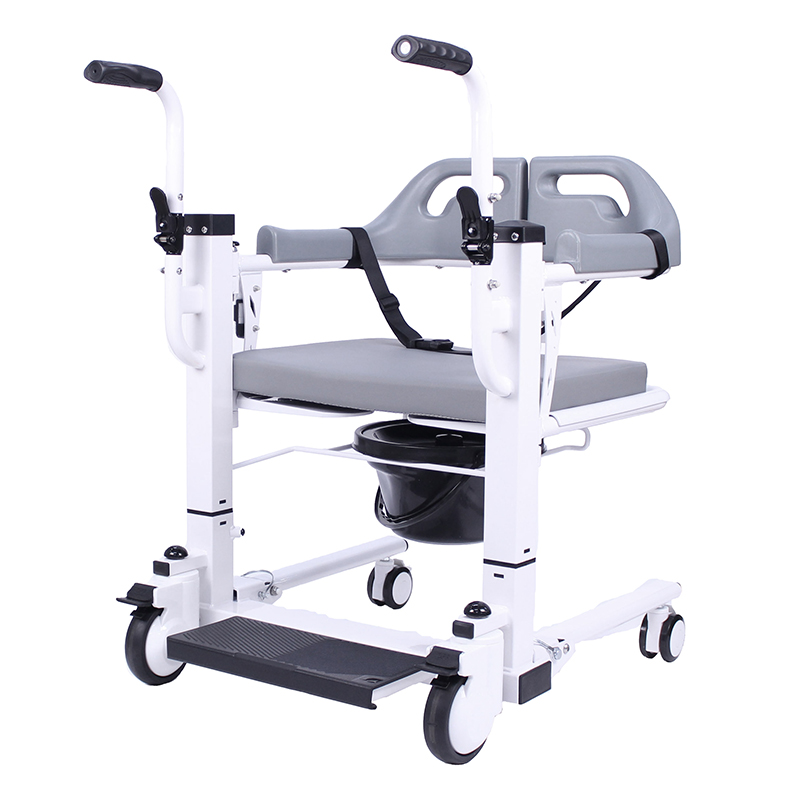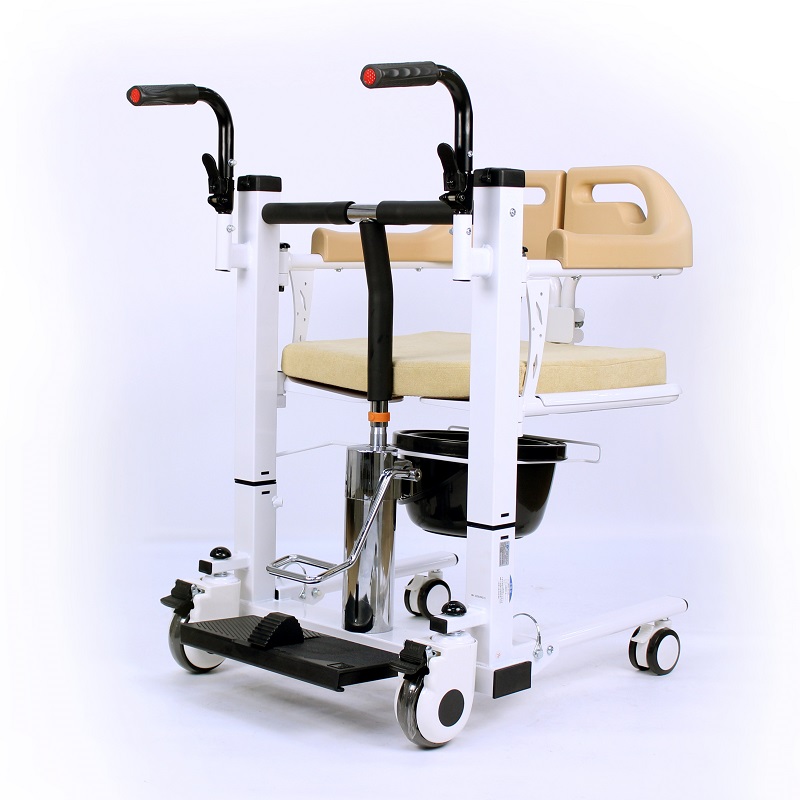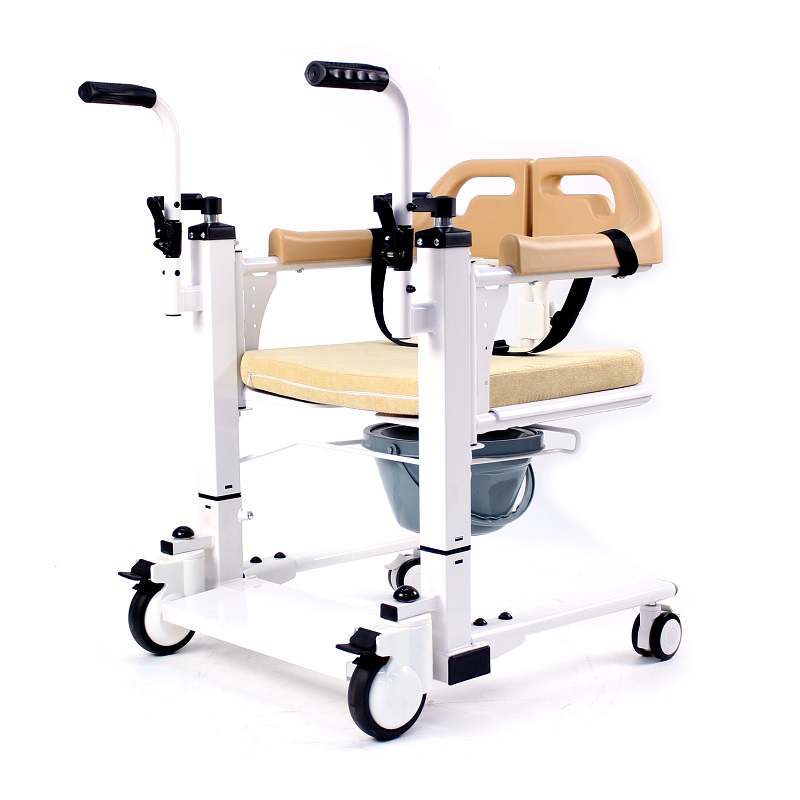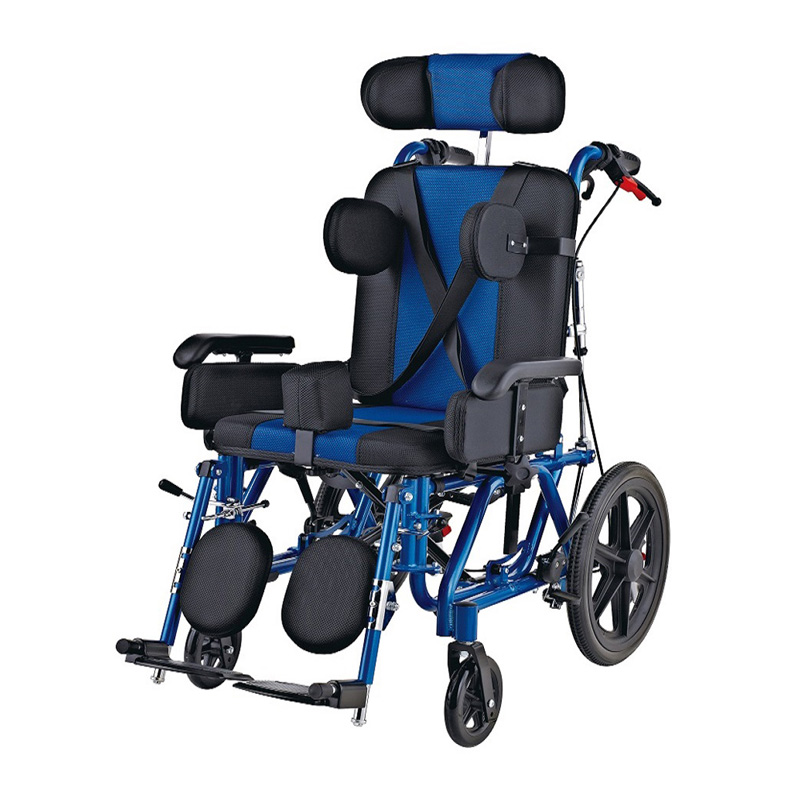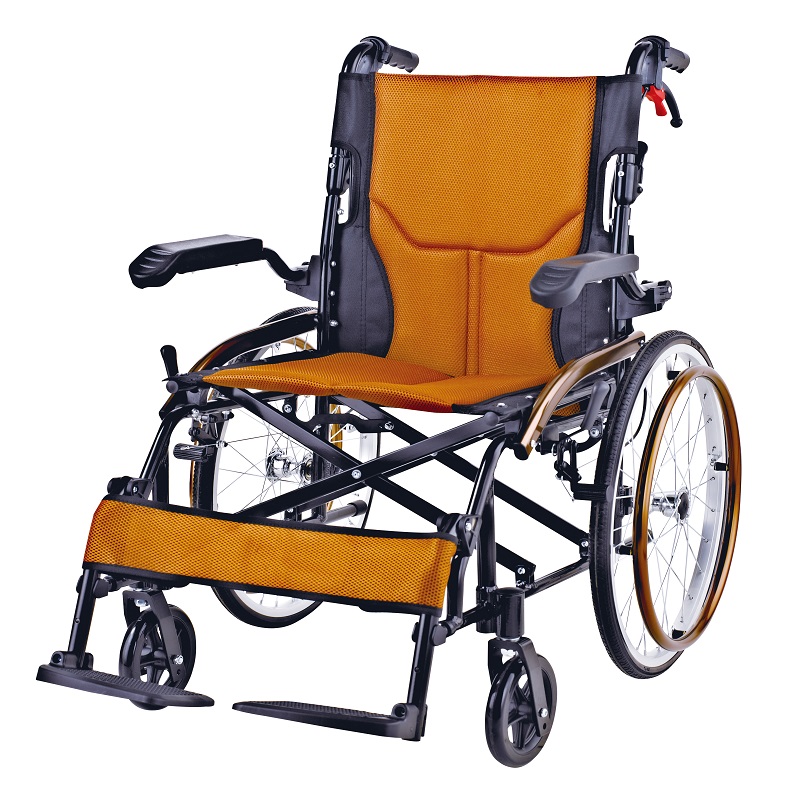Among rehabilitation medical devices, wheelchairs are hailed as "extensions of mobility." Among the many wheelchair types, manual wheelchairs are the preferred choice for the elderly, people with physical disabilities, and those recovering from surgery due to their simple structure, reasonable price, and flexible operation. However, one of the most pressing questions for many users when purchasing a manual wheelchair is, "What is the lifespan of a manual wheelchair?"
This seemingly simple question actually involves multiple factors, including materials science, mechanics, frequency of use, maintenance, and environmental factors.
Today, we will systematically explore the lifespan of a manual wheelchair from multiple professional perspectives, providing a reference for consumers and medical institutions.
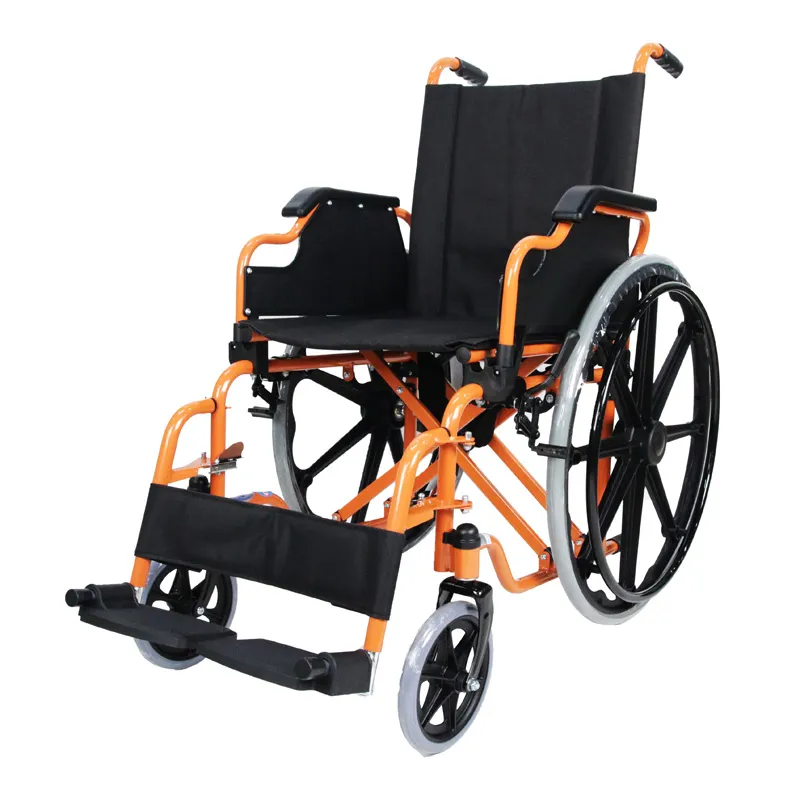
What is a manual wheelchair?
Before delving into the lifespan of a manual wheelchair, it's important to clarify the concept. A manual wheelchair is a wheelchair that relies on the user's hand to push the wheel rims or a rear handle to achieve mobility. Compared to electric wheelchairs, manual wheelchairs do not rely on batteries or motors, have a relatively simple structure, and are less prone to failure.
Common types of manual wheelchairs include:
1. Standard manual wheelchair (traditional hospital type)
2. Folding manual wheelchair
3. Lightweight manual wheelchair
4. Sports manual wheelchair
5. Portable travel manual wheelchair
Each type of manual wheelchair has different design structures and usage purposes, which directly affect its service life.
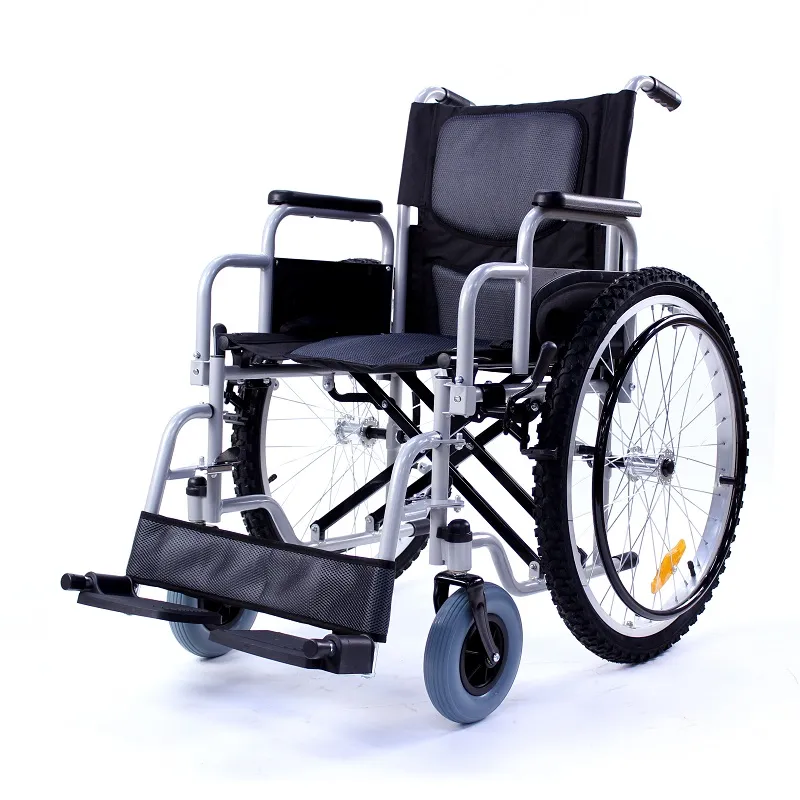
Core factors that determine service life: structure, material and frequency of use
1. Material determines basic service life
Material is the fundamental factor affecting the service life of a manual wheelchair. Common wheelchair materials are as follows:
(1) Steel manual wheelchair
· Features: Made of carbon steel or stainless steel, strong and durable, low cost.
· Average service life: 5~7 years (reasonable use and maintenance)
· Advantages: Strong load-bearing capacity, stable structure, suitable for long-term static use, such as hospitals and nursing homes.
· Disadvantages: Heavy weight, easy to rust, and inconvenient to carry.
(2) Aluminum alloy manual wheelchair
· Features: Lightweight, corrosion-resistant, easy to fold and go out. ·Average service life: 6~8 years (moderate-intensity use)
·Advantages: Easy to carry, suitable for active or frequent users.
·Disadvantages: Structural fatigue may occur under severe impact.
(3) Titanium alloy manual wheelchair
·Features: High strength, corrosion resistance, lightweight, one of the main materials for high-end wheelchairs.
·Average service life: 8~12 years (long-term daily use)
·Advantages: Suitable for professional sports wheelchairs or those with heavy dependence.
·Disadvantages: Expensive, relatively complex to repair and replace parts.
(4) Carbon fiber manual wheelchair
·Features: The lightest and most modern material, expensive.
·Average service life: More than 10 years (careful maintenance)
·Advantages: Light and flexible, outstanding performance, commonly seen in competition-level products.
·Disadvantages: High maintenance cost, greater risk of breakage than metal materials.
2. Frequency of use and environment affect durability
The life of a manual wheelchair is not fixed in the product manual, but the result of dynamic influences. The following factors can significantly affect a wheelchair's lifespan:
· Daily usage: Frequent users (such as those with a complete disability) will have a shorter lifespan than occasional users.
· Usage environment: Humid, dusty, and high-temperature environments can accelerate corrosion and material fatigue.
· Transport frequency: Frequent climbing stairs, storing and moving, and traveling with checked luggage can cause wear and tear on joints.
· Maintenance: Regular cleaning, lubrication, and tightening screws are important for extending wheelchair lifespan.
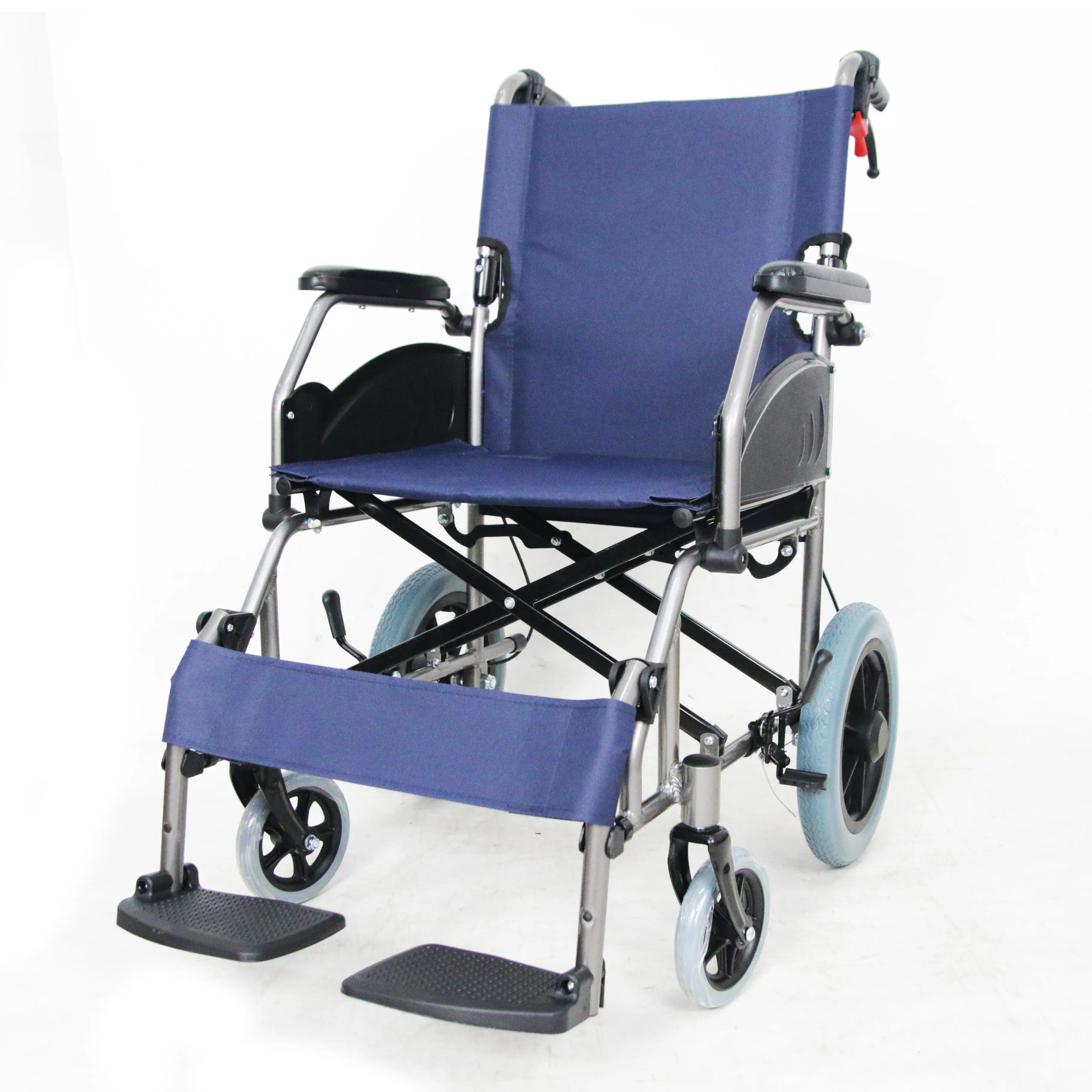
Comparison of the lifespans of different manual wheelchair types
Types | Suitable for | Features | Common Materials | Estimated Service Life |
Standard manual wheelchair | Elderly, postoperative patients | Simple structure, low price | Steel | 4-6 years |
Folding manual wheelchair | Home use/temporary travel | Easy to store and carry | Aluminum alloy, steel | 5-7 years |
| Lightweight manual wheelchair | Active users, long-term self-care individuals | Flexible and labor-saving | Aluminum alloy, titanium alloy | 6-8 years |
Sports manual wheelchair | Sports athletes, paraplegics | High stability and strong dynamics | Titanium alloy, carbon fiber | 8-12 years |
| Travel portable wheelchair | Temporary assistance, travel companion | Ultra-light design, foldable | Aluminum alloy, light steel | 3-5 years |
How do accessories affect the overall wheelchair lifespan?
In addition to the frame itself, a manual wheelchair's accessories also affect its overall lifespan and user experience:
1. Tires and wheels
· Solid tires: Suitable for urban roads, with a lifespan of over 5 years.
· Pneumatic tires: Highly comfortable, with a lifespan of 1-3 years depending on tire pressure and maintenance.
· Bearing wear: Affects pushing resistance and should be inspected annually.
2. Seat and backrest
· Ordinary foam cushions: Should be replaced every 1-2 years.
· Medical-grade gel/air cushions: 3-5 years, depending on frequency of use and cleaning.
3. Brake System
· Frequently used manual brakes require repair or replacement every two years.
· Looseness, slippage, or sticking should be addressed immediately to avoid safety hazards.
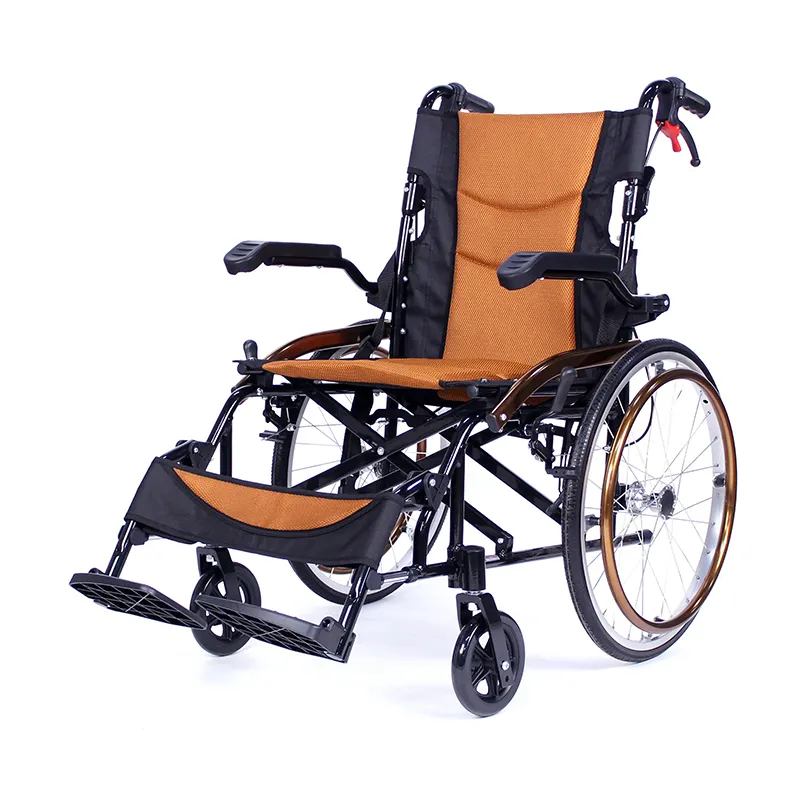
Case Analysis: Wheelchair Lifespans Vary
Case 1: Bedridden Patient
Mr. Wang, bedridden after a stroke, uses a manual wheelchair and rarely moves daily. He has used a steel wheelchair for seven years, having only replaced the tires and seat, with no significant frame issues.
Conclusion: Low-frequency use + indoor use = extended lifespan.
Case 2: Young Disabled Person
Ms. Zhang uses a lightweight aluminum alloy wheelchair for daily commuting. After about two years, she discovered cracks in the frame joints and had to replace it.
Conclusion: High-frequency use + outdoor use + frequent folding and transport = shortened lifespan.
Case 3: Public Wheelchairs in a Rehabilitation Facility
A batch of steel manual wheelchairs were deployed to a nursing home for shared use. After three years, several of them experienced brake failure, tire deterioration, and armrest detachment, necessitating a major replacement.
Conclusion: Sharing with multiple people + intensive use = Early maintenance required.
How to extend the lifespan of a manual wheelchair? — 5 key tips
1. Regularly check the condition of the screws, brakes, and wheels, recommended every three months;
2. Keep it clean and dry, especially after rain or snow to prevent rust;
3. Avoid rough handling and dropping, and pay attention to the folding order when loading it into a vehicle;
4. Store it properly, avoiding long-term storage in humid or high-temperature areas;
5. Regularly replace consumable parts such as the tire, cushion, and armrest foam.
Dayang Medical: Lifespan is just a guide; safety is key
Dayang Medical, a high-quality Chinese wheelchair manufacturer, points out:
"Many people only focus on how long a manual wheelchair will last. In fact, they should pay more attention to whether it is safe, comfortable, and suitable for their current physical condition during these years. No matter how good the material or how long it lasts, if it fails to meet the user's posture adjustment needs or poses a risk of pressure sores, it is a 'bad wheelchair.'"
Therefore, users should consider their medical conditions, weight, living environment, and other factors to choose the manual wheelchair that best suits them, rather than simply pursuing "the longest lifespan."
How can I purchase products from Dayang Medical?
Purchasing from Dayang Medical is simple. Buyers can contact our sales team directly to request quotes, negotiate wholesale prices, and place purchasing orders. As a professional China manufacturer and factory supplier, we provide electric wheelchairs, hospital beds, shower chairs, and walking aids with worldwide delivery.
Buyers enjoy competitive low prices, sales promotions, and reliable factory supply. Whether you are looking for wholesale medical devices, customized wheelchair designs, or cheap yet high-quality products, Dayang Medical ensures a smooth purchasing process.

